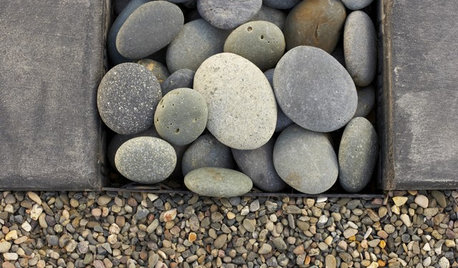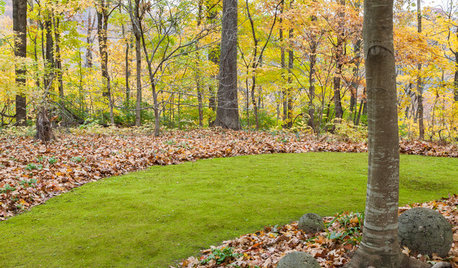using roundup/kleenup to kill lawn
louisianagal
20 years ago
Related Stories

BEFORE AND AFTERSSee 6 Yards Transformed by Losing Their Lawns
Wondering whether a turf lawn is the best use of your outdoor space? These homeowners did, and they found creative alternatives
Full Story
LANDSCAPE DESIGN15 Great Ideas for a Lawn-Free Yard
End the turf war for good with hardscaping, native grasses and ground covers that save water and are easier to maintain
Full Story
EARTH DAYThe Case for Losing the Traditional Lawn
Work less, help the environment and foster connections by just saying no to typical turf
Full Story
LANDSCAPE DESIGNGet Along With Less Lawn — Ideas to Save Water and Effort
Ditch the mower and lower your water bill while creating a feast for the eyes with diverse plantings and gathering places
Full Story
GARDENING GUIDES5 Great Grasses for a New Lawn
Learn about maintenance, wear tolerance, ideal climate and more for these top turf choices to pick the right one for you
Full Story
GARDENING GUIDESWeed War: When and How to Use Chemical Herbicides
Before you spray, arm yourself with knowledge about which weed killers — natural or synthetic — are right for your yard
Full Story
EARTH DAY5 Ideas for a More Earth-Friendly Garden
Consider increasing the size of garden beds, filtering rainwater and using plants to reduce energy use
Full Story
EDIBLE GARDENSNatural Ways to Get Rid of Weeds in Your Garden
Use these techniques to help prevent the spread of weeds and to learn about your soil
Full Story
LANDSCAPE DESIGNThe Right Stone for Your Garden Design
Gravel, pebble, cobble and paddle: Stones vary in size and shape, and have different uses in the landscape
Full Story
LANDSCAPE DESIGNMoss: Nature’s Carpet for the Garden
Learn how to grow and use this ancient and mysterious natural wonder for delightful texture in the landscape
Full Story





Judy_B_ON
macfairman
Related Professionals
Windham Landscape Architects & Landscape Designers · Mountain Brook Landscape Architects & Landscape Designers · Woodinville Landscape Architects & Landscape Designers · Arlington Landscape Contractors · Brooklyn Park Landscape Contractors · Choctaw Landscape Contractors · Cornelius Landscape Contractors · Middleton Landscape Contractors · Nutley Landscape Contractors · Shoreview Landscape Contractors · Tavares Landscape Contractors · Vineyard Landscape Contractors · Frederick Decks, Patios & Outdoor Enclosures · Manchester Decks, Patios & Outdoor Enclosures · Rosemont Decks, Patios & Outdoor Enclosureshenry_kuska
john_mo
henry_kuska